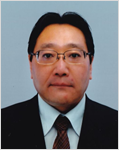 |
Advances in Self-Powered Sensing: Triboelectric
|
| The development of self-powered sensing devices has gained significant momentum in recent years, driven by the need for sustainable and autonomous sensing technologies. Triboelectrification, the phenomenon where contact between two materials induces charge transfer and generates oppositely charged surfaces, forms the basis of these devices. When integrated with electrostatic induction, this mechanism enables the fabrication of functional devices broadly classified as triboelectric nanogenerators (TENGs) for energy harvesting and triboelectric nanosensors (TENSs) for self-powered sensing. In our previous work, we demonstrated that surface-functionalized TENSs can selectively detect specific targets, such as ions, biomolecules, and microorganisms, by generating distinct electrical signals upon target interaction. These changes in signal output allow both qualitative and quantitative analyses. More recently, we have advanced this concept through the development of solid-liquid interface TENSs, enabling improved detection performance and expanding the range of detectable targets. These innovations not only address key limitations of solid-solid TENSs but also establish foundational sensing mechanisms and operation principles. Our ongoing efforts aim to further broaden the application potential of solid-liquid TENSs in environmental monitoring, healthcare diagnostics, and smart sensing platforms.
Biography |
|
 |
Nanoparticle Arrays Fabrication for Raman Enhancing and
|
| We demonstrate a facile and cost-effective method for fabricating a laser-scribed graphene (LSG)-based platform that serves as both an electrochemical (EC) and surface-enhanced Raman spectroscopy (SERS) substrate for biological and environmental detection. The LSG substrate was prepared via direct laser scribing, followed by the deposition of gold nanoparticles (Au NPs) through thermal evaporation or electrochemical deposition. The three-dimensional porous microstructure of the LSG enhances the SERS signal of the Au@LSG substrate, while fine-tuning the Au NP thickness (5–25 nm) further optimizes the EC-SERS enhancement. The developed sensor exhibits excellent performance in detecting uremic toxins. Among the tested configurations, the substrate coated with 20 nm Au NPs provides the highest SERS enhancement and successfully detects both dye molecules (rhodamine 6G, R6G) and uremic toxins (urea, uric acid, and creatinine). The EC-SERS intensity of R6G is enhanced by 17-fold at an applied potential of –1.3 V compared to SERS without an electric field, while urea shows a fourfold increase at –0.2 V. Furthermore, the sensor achieves remarkably low detection limits (10⁻³ M for creatinine and uric acid, and 10⁻⁴ M for urea) and displays distinct, concentration-dependent responses in cyclic voltammetry (CV) measurements. By applying different voltages, specific molecules can be selectively enhanced, demonstrating the platform’s capability for the target detection of biomolecules, bacteria, and viruses. This strategy effectively addresses challenges associated with complex sample pretreatment and highlights the potential of Au@LSG-based EC-SERS substrates for versatile sensing applications.
Biography |
|
 |
Mass-production method of moth-eye structured film and fabrication
|
| Moth-eye structure is one of biomimetic structure which has anti-reflection property. To fabricate this structure, we have developed the method of oxygen ion beam irradiation to glassy carbon (GC) material. GC is carbon-based material and after irradiation of oxygen ion beam, this surface gets rough and this structure has nano-scale conical structure, thus, moth-eye structure can be obtained self-assembly. Using this technique, scale-up technique has been developed. First, roll mold was fabricated by sputter deposition of GC to roll surface, then oxygen ion beam was irradiated by reactive ion etching equipment. Fabricated moth-eye roll mold was set on roll-to-roll Ultraviolet nanoimprint lithography (RTR UV-NIL) machine and transferred to film surface. Transferred moth-eye structured film had also low reflection (ca. 0.1% for visible light wavelength) and high transparency (ca. 94%). This film has continuously transferred with 1.5 m film width, so mass-production of moth-eye structure film is possible. Developed moth-eye structured films can use for show window, show case, digital signage and so on. In order to further improve functionality by utilizing the moth-eye structure, a micro-nano hybrid structure was fabricated. This method involves applying a hydrophilic photoresist to the moth-eye surface to form a micropattern, then filling the moth-eye surface with a water-repellent UV-curable resin, irradiating it with UV light, and then releasing the micropattern to create a hydrophilic region on a micron scale within the water-repellent moth-eye. As a result, an adhesive, water-repellent surface known as the rose petal effect was created, and water droplets could also be aligned on the hydrophilic region, making it possible to use the surface for water droplet alignment.
Biography |
|
 |
Semiconductor Nanomembranes for Organ-on-Chips, Wearables, and Implantable ApplicationsProf. Hoang-Phuong Phan |
| Abstract Inorganic semiconductors are the key building block for most industrial integrated circuits, from computing processors to laser modules and power converters. Engineering these materials into free-standing nanomembrane architecture enables flexibility and stretchability, opening new avenues for biosensing and biomedical applications that demand mechanical compliance with soft tissues. This talk highlights our recent efforts to engineer nanomembrane semiconductors, including silicon and silicon carbide, for three classes of biomedical systems: organ-on-chip (for disease modeling and drug screening), wearable (for on-skin monitoring/diagnosis), and implantable devices (for invasive interventions), Figure 1. In the first example, we harness the multiphysics coupling of liquid surface tension and gas compression in nanoscale silicon cantilevers to create biomechanical well plate (BWP) arrays for autonomous, longitudinal monitoring of organoid and engineered heart tissue contractions. In the second, we integrate silicon cantilever chips with wireless, flexible circuitry to realize a miniaturized auscultation patch (AusculPatch) – recently patented technology for home-based health monitoring. This platform captures vital body sounds including respiration, pulse waves, heart sounds, and vocal cord vibrations, supporting the diagnosis of conditions such as valvular disease and sleep apnea. In the third, we advance transfer printing techniques for wide bandgap semiconductor membranes (e.g., SiC), enabling long-term implantable electronics such as robust biobarriers, stimulation electrodes, and strain sensors. Together, these technologies establish a toolkit of semiconductor-based platforms that accelerate the transition away from animal models, enable telehealth solutions, and support chronic disease management. Biography |
|
 |
MEMS Gas Sensors with Wafer Level Fabrication and Testing TechniquesProf. Fei Wang |
| Recently, MEMS gas sensors have attracted more and more attention thanks to their compact size, high sensitivity and compatible fabrication process. Great efforts have been made to develop chemiresistive gas sensors based on metal-oxide semiconductor nanomaterials, for the potential applications such as gas emission monitoring for industrial plants, indoor and outdoor pollution detection, and breath analysis. Though many new materials and devices have been developed, there are still a few technical challenges for the MEMS gas sensors such as the process compatibility and the wafer-level testing for the device. This talk will report our recent works on (1) the new compatible fabrication technique for the sensing materials, and (2) the intelligent and fast test strategy for device sorting at wafer level.
Biography |
|
 |
Biomimetic Optoelectronics and Sensors for Future Embodied AIProf. Zhiyong Fan |
| Abstract Millions of years of natural evolution have gifted us a vibrant biological world. Within living organisms, diverse micro-nano structures constitute organs with varied functions. Among these, sensory organs possess remarkable capabilities for information collection and environmental adaptation. The ingenious designs of many biological sensory systems offer valuable inspiration for developing bionic sensor devices. This presentation will introduce our research group’s work over the past years in constructing bio-inspired visual and olfactory sensors using three-dimensional micro-nano materials, including hemispherical artificial retinas, spherical bionic eyes, and artificial intelligence-driven electronic noses. Our group pioneered the development of artificial retinas based on ultra-dense optoelectronic nanowire arrays, where individual nanowires emulate the photoreceptor cells in human eyes. By fabricating these nanowires from different semiconductor materials, our bionic retinas can achieve visible light perception, mid-infrared detection, and even night vision capabilities. Furthermore, we have innovatively created large-scale integrated chemical sensor chips on three-dimensional porous substrates. When empowered by artificial intelligence algorithms, these chips can mimic biological olfaction to distinguish hundreds of different gases and odors. These two categories of bio-inspired sensors address pressing needs for environmental monitoring in smart homes and cities, while also holding potential to assist various embodied AI in performing complex tasks in challenging environments. Biography |
|
 |
Large-area Nanoimaging and NanolithographyProf. Wooyoung Shim |
| Abstract Advances in next-generation electronics, 2D materials, photonics, and flexible systems demand manufacturing tools that deliver both high resolution and high throughput, beyond the constraints of conventional scanning and optical methods. In this talk, I introduce new nanomanufacturing and nanoimaging approaches that unify large-area capability, mechanical adaptability, and nanoscale precision. These platforms enable rapid topographic imaging over millimeter scales, reliable patterning far below the diffraction limit, and conformal operation on curved, rough, or heterogeneous surfaces. By rethinking probe architectures, contact mechanics, and near-field light–matter interactions, we achieve scalable processes suitable for semiconductors, energy devices, bio-integrated systems, and future non-planar electronics. This talk will highlight the underlying physical principles, implementation strategies, and the broader vision for integrating such tools into industrial-scale nanomanufacturing. Biography |
|
 |
Plasma Synthesis and Modification of Catalytic Materials for Sustainable Energy SystemsProf. Oi Lun Helena Li |
| Abstract Frontier researches based on plasma-catalyst system has been expanded to the synthesis of electrocatalysts, Biomass upgrades and CO2 conversions. Plasma, due to its high excitation energy and unique nature, can easily exceed the thermodynamic limitation compared to conventional thermochemical reactions. For example, plasma engineering allows direct carbonization to synthesize carbon nanomaterials in organic solvent (e.g., benzene, pyridine, phenylamine) at ambient temperature and pressure. Specifically, the generation of NC can be achieved via rapid C-N and/or C-C integration during plasma discharge and the related chemical reactions. Hybrid metal/ carbon materials synthesis can be realized when metal precursors are introduced into the organic solution. In addition, when applied in-situ ultrasonic homogenizer during plasma engineering, ultra-fine and dispersed metal nanoparticles or even single-atom doped metal in carbon substrate was successfully synthesized. On the other hand, the atmospheric pressure plasma-gas interface offers a simple and effective method for modifying the surface properties of materials without causing significant structural damage. In particular, due to its high excitation energy and inert nature, plasma surface modification minimizes chemical side reactions while enabling efficient energy transfer which more effectively promote lattice excitation and contributing to oxygen vacancy formation in metal and ceramic materials. The design of feasible plasma-catalyst system with adequate design of hybrid metal/carbon-supported materials, single-atom doped metal atom/carbon-supported materials, and various multi-functional catalysts will be discussed, followed by the current progress on the performance of these materials in the application on Proton Electrolyte Membrane Fuel cell, Solid Oxide Fuel cells, hydrogen production from direct seawater electrolyte will be covered. Biography |
|
 |
Intelligent optical system with focus controlProf. Seong Chan Jun |
| Abstract The development of controllable, ultra-compact optical devices remains a critical challenge. Consequently, there is an increasing demand for thin, lightweight components that exhibit high performance. However, conventional optical devices are constrained by their fixed performance characteristics at the time of fabrication, which precludes the possibility of parameter control. This research overcomes the performance limitations of existing optical devices by fabricating thin, diffractive lenses in a thin-film form using high-transmittance two-dimensional materials. The diffractive lens developed in this study enables focal length adjustment and multifocal generation with a single initial fabrication while maintaining high optical efficiency. Moreover, it has the potential to evolve into an intelligent optical system through integration with artificial intelligence and can be utilized as a molecular-level sensing device. The sensor in this intelligent optical system offers superior detection capabilities in comparison to conventional electrochemical sensors, facilitating characteristic analysis and discrimination. This research proposes a methodical approach, delineating a sequence of steps from the fabrication process of ultra-miniature optical devices suitable for integration into smart devices to the construction of intelligent optical systems. These findings offer broad extensibility, spanning fundamental science—such as the optical properties of two-dimensional materials and the interaction between molecules and light—to engineering applications, including sensor devices. Biography |
|
 |
Performance Analysis of CuO-Doped Carbon Fiber Composites: Thermal Conductivity and PiezoresistivityProf. Hyung Wook Park |
| Abstract In the automotive industry, woven carbon fiber composites are susceptible to impact damage via low-impact energy absorption. In this study, functional composites were fabricated using carbon fiber and CuO nanomaterials. To enhance the functional properties, carbon fibers were modified with CuO nanoparticles. The CuO-modified carbon fiber composites exhibited superior electrical thermal conductivity compared to bare carbon fiber composites. Piezoresistivity—defined as the change in volume electrical resistivity with applied strain—was also higher in the CuO-modified composites. These experimental results are attributed to the formation of multi-junction interfaces between CuO and carbon fibers. As the molar concentration of CuO increased, both Joule heating and piezoresistive sensitivity (gauge factor) improved. Supporting these findings, SEM imaging revealed distinct morphological characteristics, while X-ray diffraction (XRD) analysis confirmed the crystallinity and CuO content. Specific heat capacity was examined using differential scanning calorimetry (DSC) to assess CuO’s contribution to electrical heat generation. Additionally, strain-induced resistance changes within the elastic region were evaluated through three-point bending tests. Biography |
|
 |
Sustainable manufacturing of optical metasurfaces with engineered optical materialsProf. Junsuk Rho |
| Abstract Metamaterials and metasurfaces are novel optical components composed of nanostructure arrays. They offer the advantage of an ultracompact form factor and can image submicron objects with resolution approaching the diffraction limit of light. The scope of this imaging extends from simple microscopes to more advanced light imaging applications such as 3D sensors, LiDAR, bio-imaging, and cameras. The wavelength range of imaging is also diversifying to support various imaging applications. Metalenses operating in the UV region enable high-resolution imaging due to the short wavelength of light. In the visible light spectrum, metalenses can be used for imaging in VR/AR displays. Near-infrared metalenses have potential applications in night vision devices and endoscopes. The wavelength range extends further to include the ultrasound region, where it can be used in photoacoustic microscopy. Additionally, elastic metalenses can be applied for energy harvesting, and acoustic metalenses can be used to focus sound waves. Furthermore, metalenses can perform imaging with various functionalities. They can tune their focal length, demonstrate trichannel imaging based on spin, and even image single photons emitted from a source. While metalenses operate across various wavelengths and offer diverse functionalities for numerous imaging applications, their design is currently not scalable, making large-area designs computationally heavy and expensive. To address this, efficient computational methods like RCWA and AI/DB-based design approaches have been developed. However, even with advances in large-area design capabilities, their commercialization has been hindered by manufacturing limitations such as high cost and low throughput. To reduce the production cost of metalenses, nanoimprint lithography has been employed. To address the low refractive index of conventional imprint resins, high-refractive-index particles are incorporated, creating a one-step printable platform On the other hand, ArF photolithography has been used to overcome low throughput and produce large-area metasurfaces at wafer scale. However, due to the high manufacturing costs associated with this method, research has been conducted on mass-producing metasurfaces by using wafer-scale nanoimprint technology to replicate metasurfaces initially created through photolithography. These scalable manufacturing approaches are expected to propel metalenses beyond the research level and into practical applications. Biography |
|
 |
Advanced spectral optical metrology and its industrial applicationsProf. Daesuk Kim |
| Abstract This talk presents advanced spectral optical metrology, which incorporates spectroscopic ellipsometry, interferometry, and hyperspectral imaging techniques. In this talk, we describe how to combine spectrometry, interferometry, and ellipsometry to create a new concept of advanced spectral optical metrology. For industrial applications such as surface 3D profiling, extracting the geometric thickness of thin films, and scatterometry for periodic nano-pattern measurements, measurement speed is the most significant factor in optical metrology. As a potential candidate for the advanced high-speed optical metrology solutions, we present a dynamic spectroscopic ellipsometry (DSE) and a dynamic spectroscopic imaging ellipsometer (DSIE) that employs a monolithic polarizing interferometric module. Unlike conventional spectroscopic imaging ellipsometers, which require a relatively long acquisition time due to the rotation of polarization elements and a wavelength scanning mechanism, the proposed DSIE system, which employs a line-scan hyperspectral imaging technique, enables the extraction of a spatial-spectral ellipsometry phase map Δ(x, λ) at real-time speed. Notably, this talk provides a detailed description of how a microscopic imaging capability can be integrated into the new concept of spectroscopic imaging ellipsometry. We then describe how the DSIE system can be extended to a micro-nano thickness profilometer by integrating with spectral interferometry. This talk presents additional industrial applications where the line-scan hyperspectral imaging scheme is employed, including chromatic confocal imaging and spectral imaging reflectometry. Biography |
|
 |
Development of animal testing alternatives using organoidsProf. Jiseok Lim |
| Abstract Conventional cell‐culture techniques typically allow cancer cells to grow as two-dimensional (2D) monolayers, whereas tumors in vivo exist in highly complex three-dimensional (3D) architectures. Consequently, 2D monolayers differ substantially from in vivo tumor tissues in their physical and biological characteristics. These discrepancies create biological and physical barriers that influence drug penetration and cellular responses, often leading to drug resistance. As a result, drug screening performed on 2D monolayers tends to overestimate the therapeutic efficacy of candidate compounds, making it difficult to accurately evaluate drug performance. Recent efforts have therefore focused on developing 3D tumor models that better recapitulate the in vivo environment. However, traditional 3D tumor culture methods suffer from limitations such as low production yield, dependence on operator skill, and difficulty controlling spheroid size, which significantly restrict their applicability in industrial settings. To overcome these challenges, we developed a droplet-based microfluidic system capable of producing 3D tumor spheroids with high throughput and controllable size. Using two immiscible phases—an aqueous phase containing circulating tumor cells (CTCs) and culture medium, and an oil phase supplemented with surfactants—we generated stable droplets by exploiting hydrophilic and hydrophobic interactions at the interface. This microfluidic platform achieved a production rate exceeding 1,200 droplets per minute. After encapsulating CTCs within droplets, we incubated them for 24 hours, during which the cells spontaneously aggregated into 3D tumor spheroids. Long-term culture for more than 14 days was achieved using a magnetic stirrer to maintain droplet suspension. Moreover, spheroid size was precisely controlled by adjusting the concentration of the cell suspension. Immunofluorescence staining confirmed the expression of tumor-specific biomarkers within the generated 3D constructs. Overall, this microfluidic approach overcomes the low-yield limitations of conventional methods, automates the production process, and enables tunable control of spheroid size, offering a robust platform for reliable drug screening and cancer research. Biography |
|
 |
Learned microscopy for high-throughput depth-enhanced imagingProf. Chulmin Joo |
| Abstract High-resolution imaging across large fields of view is essential yet challenging, primarily because conventional microscopes face an inherent trade-off between depth of field (DoF) and resolution. Overcoming this limitation typically requires capturing multiple images while repeatedly adjusting the focus, leading to a slow and inefficient workflow. We introduce a learning-based microscopy platform that enables high-resolution imaging of large an thick specimens without the need for sequential refocusing. By integrating a physics-informed deep learning strategy for phase-filter design with a deconvolutional neural network, our method delivers sharp, high-resolution images over significantly extended depth ranges. Both simulations and experimental results demonstrate more than a 15-fold increase in DoF compared to traditional systems. This versatile technology holds strong promise for high-speed optical metrology, rapid diagnostic imaging, and next-generation vision applications Biography |
|
 |
Metal-Enhanced Fluorescence Biochip Using Ag Nanorods on Micropost Arrays for Multiplex Quantitative Biomarker DetectionProf. Seok-min Kim |
|
Abstract Biography
Dr. Seok-min Kim is a professor in School of Mechanical Engineering at Chung-Ang University, Seoul. He received B.S. and Ph.D. degrees in School of Mechanical Engineering at Yonsei University in 2001 and 2006, respectively. He served as a post-doctoral researcher in Department of Electrical and Computer Engineering at the University of Illinois at Urbana-Champaign in 2007-2008. His research interests involve a low-cost and large-area micro/nano structuring technologies such as micro/nano-imprinting, micro/nano glass molding, micro/nano metal forging, and glancing angle deposition, and their optical, biological and thermo-fluidic applications including digital display, LED lighting, concentric photovoltaic, microfluidic chip, enhanced fluorescence microarray, surface enhanced Raman spectroscopy, enhanced boiling heat transfer surface, and drag reduction surface. |
|
 |
Micro/nano-enabled wearable/flexible sensors for smart healthcare and medical applicationsProf. Inkyu Park |
| Abstract Smart healthcare technology and wearable sensors revolutionize patient care by providing continuous, real-time health monitoring, enabling early detection of potential health issues. They empower individuals with actionable insights into their own health, fostering preventative care and personalized healthcare strategies. By integrating smart materials and sensors, these technologies enhance the responsiveness and efficacy of healthcare interventions. Furthermore, wearable devices facilitate a seamless connection between patients and healthcare providers, improving healthcare delivery and outcomes through data-driven decisions. In this talk, we discuss the micro/nanostructure-based wearable sensors for smart healthcare applications including self-powered, mechanical metamaterial-based highly stretchable strain sensors for exercise monitoring; porous elastomer – carbon nanotube (CNT) composite based, large dynamic range pressure sensors for wrist pulse, motion and posture monitoring; micro/nano-hierarchical structure-based pressure sensors for smart wristband to prevent carpal tunnel syndrome (CTS) ; and near field communication (NFC) based wireless, battery-free pressure/temperature/humidity sensors for the patient monitoring to prevent pressure injury, which were recently developed at our research group. Biography |
|
 |
Manufacturing and mechanical-electrical characterization of high-performance PENGs based on multi-stackable, domino-overlapped CNT scaffoldsProf. Jong G. Ok |
| Abstract This study presents a carbon nanotube (CNT)-based piezoelectric nanogenerator (CPENG) that integrates vertically aligned CNT structures with a highly uniform hybrid of piezoelectric materials composed of BaTiO3 (BTO) and poly(vinylidene fluoride-co-trifluoroethylene) (P(VDF-TrFE)). Through a capillary force-assisted process, the piezoelectric material uniformly infiltrates the CNT structure, forming a domino-overlapped structure that plays a key role in achieving high voltage and charge output under repeated mechanical stimulation. The nanoscale-aligned porosity of the CNT structure enhances the β-phase formation in P(VDF-TrFE) and establishes efficient piezoelectric polarization pathways, thereby improving the overall piezoelectric output. Furthermore, optimization of the CNT growth length and multilayer stacking number effectively enhances the output performance, and the output of the same CPENG can be tuned by adjusting the attachment direction and area of the output electrodes. The resulting compact CPENG device (1 cm × 1 cm) exhibits stable voltage generation up to 12.3 V over more than 2,000 repeated mechanical cycles. In addition, the CPENG demonstrates excellent flexibility and mechanical robustness, maintaining reliable and continuous energy generation under practical stimuli such as finger tapping and footsteps. Moreover, the device shows stable electrical output and structural integrity over a wide temperature range from -20 °C to 100 °C, suggesting that the CPENG can serve not only as a wearable power source but also as a promising platform for energy harvesting in extreme environments. Biography |
|
 |
Battery-Free, Wireless Multimodal Sensors for Advanced Biomedical ApplicationsProf. Yong Suk Oh |
| Abstract Wireless multimodal sensors provide continuous and non-invasive monitoring of diverse physiological signals and have become important tools in biomedical research. A single integrated platform that measures pressure, temperature, and biochemical markers can precisely characterize physical and chemical changes in the human body and support early diagnosis, prevention, and treatment assessment. Recent advances in battery-free, wireless technology enable ultrathin, lightweight, and flexible sensors that conform to the skin for long-term, real-time monitoring without discomfort, even during daily activities. These platforms can be applied to various biomedical applications, including pressure injury prevention, wound monitoring, and drug-delivery systems, offering significant benefits in both clinical and home-based care. Continuous tracking of physiological signals enhances the accuracy and reliability of clinical decision-making by providing quantitative information that traditional intermittent assessments cannot capture. In addition, the wireless and wearable architecture adheres securely to the patient’s skin, enabling stable long-term use under dynamic conditions and can be widely utilized in hospitals, long-term care facilities, and home-care environments. Multimodal data integration, combined with emerging AI-assisted analytical techniques, further enhances the accuracy of early disease detection and supports personalized, data-driven medical strategies tailored to individual patients. Overall, this technology provides a strong foundation for next-generation digital healthcare platforms aligned with precision medicine and promotes more proactive, efficient, and patient-centered healthcare systems that improve clinical outcomes and quality of life. Biography |
|
 |
Roll-to-Roll Film-Type Molding Process for Large Area Electronic Device EncapsulationDr. Jun Sae Han |
| Abstract In this study, we investigated roll-to-roll (R2R) based film-type molding processes as an encapsulation solution for large-area semiconductor packaging and long-length flexible printed circuit boards (FPCBs). To meet the demands of panel-scale semiconductor packaging, a film-type epoxy molding compound (EMC) was fabricated through an R2R coating process, and its rheological behavior, thermal softening characteristics, and flow-filling performance were systematically analyzed to evaluate its applicability as a high-throughput encapsulation material. Particular attention was given to the temperature-dependent viscosity evolution and minimum-viscosity window, which govern the film’s ability to fill micro-scale gaps under limited pressure conditions. For long-length FPCB packaging, an R2R lamination process using film-type coverlay materials was implemented. The filling behavior under different process temperatures, line pressures, lamination speeds, and circuit geometries was quantitatively examined to determine the key factors influencing encapsulation uniformity. Comparative analyses revealed the roles of film viscosity, heating profiles, and patterned copper topographies in determining interface bonding quality and void suppression. The integrated results demonstrate that film-type molding provides a scalable and material-efficient pathway for next-generation semiconductor and FPCB packaging, particularly for applications requiring continuous processing and large-area uniformity. Furthermore, this work highlights the broader potential of R2R film technologies for functional composite films, multilayer stacking architectures, and advanced electronic packaging platforms that demand high productivity and manufacturing flexibility. Biography |
|


